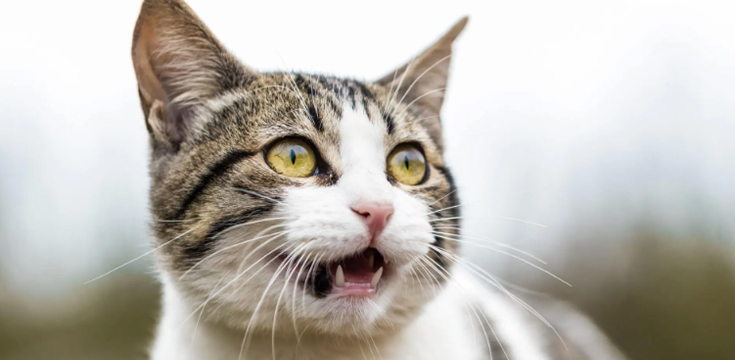Cats are known for their independent and mysterious nature, but like all animals, they communicate with us in ways beyond vocalization. Understanding your cat’s body language can help you build a stronger bond and ensure they are happy, healthy, and comfortable. Let’s explore some of the most common signals your feline friend uses to communicate.

1. Tail Position
- Tail Up: A cat with its tail straight up is showing confidence and friendliness. This is a welcoming gesture, often accompanied by head rubbing or purring.
- Tail Down: A tail that is low or tucked under indicates fear or submission. Your cat might feel threatened or anxious in its environment.
- Puffed Tail: When a cat’s tail puffs up, it’s a sign of fear, aggression, or surprise. This is a defensive posture meant to make the cat appear larger.
- Twitching or Flicking Tail: Quick, sharp movements of the tail often indicate irritation or agitation. Your cat might be warning you to back off.
2. Ear Movements
- Ears Forward: Your cat is alert, curious, and engaged. They are paying attention to something in their surroundings.
- Ears Flat: This is a sign of fear or aggression. Flattened ears indicate that the cat is feeling defensive or preparing to fight.
- Ears Swiveling: If your cat’s ears are rotating or swiveling, they are picking up sounds and trying to assess a situation. It could be a sign of alertness or nervousness.
3. Eye Expressions
- Slow Blinking: A slow blink from your cat is a sign of trust and affection. You can return the favor by blinking slowly back—it’s a way of bonding!
- Dilated Pupils: Wide, dilated pupils often mean your cat is feeling energetic, excited, or even frightened. It could be a response to a thrilling game or a sign of fear.
- Staring: A prolonged stare might seem intense, but in cats, it often signals dominance or curiosity. If the stare is accompanied by slow blinking, it’s more likely affectionate.
4. Posture and Stance
- Arching Back: A cat that arches its back and puffs up is trying to appear larger in response to a threat. It’s a defensive posture, meant to ward off potential danger.
- Lying on Back, Exposing Belly: This can mean two things—complete trust or a defensive strategy. If your cat exposes its belly, it may be inviting you to rub it, but proceed with caution; for some cats, this is a vulnerable position, and sudden touches may trigger a defensive reaction.
- Crouched Position: If your cat is low to the ground with its legs tucked under, it might be ready to pounce or feeling cautious and alert.
5. Vocalizations in Context
- Purring: Purring generally indicates contentment, but it can also be a self-soothing behavior in times of pain or distress.
- Meowing: Cats rarely meow at other cats—this is a behavior directed at humans. Different types of meows can indicate a range of emotions, from hunger to seeking attention.
- Hissing or Growling: These vocalizations are clear signs of fear, aggression, or warning. If your cat hisses or growls, it’s best to give them space.
6. Whisker Position
- Forward-Pointing Whiskers: When a cat’s whiskers are pushed forward, they’re likely curious or interested in something nearby.
- Whiskers Pulled Back: Whiskers flattened against the face are a sign of anxiety, fear, or stress. Your cat may be feeling threatened or unsure of their surroundings.
Final Thoughts: Observing the Whole Cat
No single action tells the full story. To truly understand your cat’s feelings, it’s important to observe their body language as a whole. Tail movements, ear positions, and eye behavior all contribute to how a cat is feeling at any given moment. By learning these signals, you can improve your relationship with your cat and meet their emotional and physical needs more effectively.
Understanding your cat’s body language can open the door to better communication and a deeper connection. Pay attention to these subtle signs, and soon you’ll be able to interpret their emotions like a pro!



